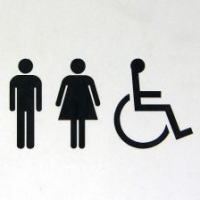Accessibility: What Was Once a Bonus Is Becoming Essential

In the US alone, 19 percent of the population live with a disability that restricts them from using technology the same way as the nondisabled would. There is increasing awareness for implementing accessibility at all levels to account for this segment of the population.
Consequently, providing equal accessibility is gradually moving from being “nice to have” to a mandatory aspect of applications. For instance, the US Department of Transportation made changes in the Air Carrier Access Act, now requiring airlines to make their web applications and kiosks at airports accessible to people with disabilities. This is a big change for the carriers, which will now have to revisit the design and implementation of every step in their workflow and get their updated applications thoroughly tested.
Implementing accessibility is a long and painstaking process, and if it has not been thought through up front, it also can get very expensive. Additionally, it may not always be a top-down engineered process. At times, it may even have to be reverse-engineered based on inputs from the testing team, depending on what defects they file and recommendations they make.
However, accessibility is also becoming a more structured landscape. Standards such as Section 508, WCAG, and the Disability Discrimination Act provide the framework for what needs to be implemented, and rubrics such as the VPAT serve as a good checklist.
At this time, only US federal agencies or federally funded agencies are regulated by Section 508. But considering how all services now have an online presence, at least the core essential services will soon start looking at mandating accessibility. This will be a great move toward an “embrace all” approach. Requiring talking ATMs was a big initiative in this direction in 2012.
What is unclear is whether there will be an agency that will certify an organization as compliant. As the accessibility mandate becomes more formal across disciplines, such audit groups may be formed—either as part of the government body or a recognized list of private auditors—giving accessibility a complete structure, such as with HIPAA or the FDA.
The window these mandates provide for rollout are often realistically large. In the case of the DOT, air carrier compliance needs to be achieved by the end of 2016, which should give enough time to engineer accessibility into the varied avenues in which the applications are available to end-users.
However, now is a good time for all organizations to start looking at digital accessibility, whether it has been mandated for them or not. The way things are heading, it is only a matter of time before implementation will go from being a nice benefit to being required, so organizations that start to think along these lines now will have a proactive edge when it is time for them to move on.

